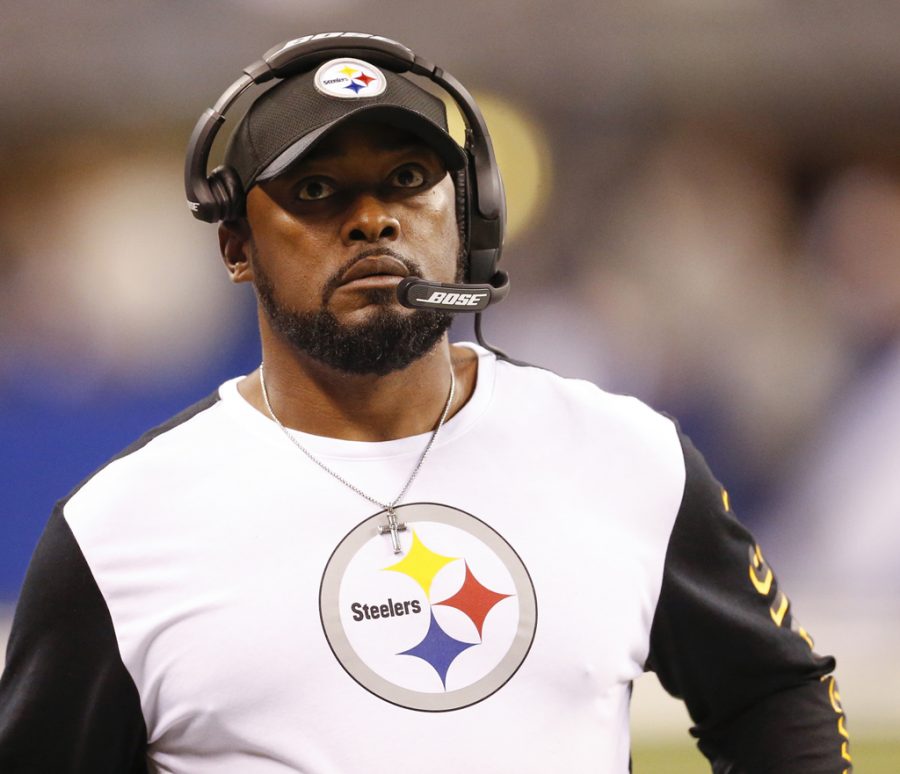Sunday’s AFC Championship Game between the Pittsburgh Steelers and New England Patriots was a mismatch of epic proportions — not on the field, but on the sidelines.
The talent level on the Steelers’ and Patriots’ 53-man rosters is virtually even. Both teams are stacked with future Hall of Fame quarterbacks, multi-talented running backs, dangerous receivers, sturdy offensive lines and fast, physical defenses.
As for the strategic battle between Mike Tomlin and Bill Belichick? Once again, no contest.
Fans can talk all they want about how the outcome would have been different if Le’Veon Bell didn’t get hurt, if Cameron Heyward wasn’t out for the season or if Martavis Bryant wasn’t suspended for the year. But the truth is, as long as Tomlin and Belichick are coaching, the Patriots will always have an advantage.
When these two teams played in Week 7, the Steelers hosted the Patriots with Ben Roethlisberger injured and backup quarterback Landry Jones set to duel with one of the greatest quarterbacks of all time, Tom Brady. The Steelers put up a competitive effort, losing by only 11 points. If not for a few costly mistakes by Tomlin, Pittsburgh might have had a chance to win.
This time, the Steelers just needed Tomlin to keep the game close and give Roethlisberger a chance to win it in the fourth quarter. Instead, his decision-making and lack of in-game adjustments helped put the game out of reach by the time it reached the fourth.
Tomlin’s first in-game mistake came on the Steelers’ first drive. On third-and-1, offensive coordinator Todd Haley dialed up a deep pass to wide receiver Sammie Coates — a receiver with a grand total of one catch in the team’s last nine games.
Not surprisingly, Coates gave minimal effort to bring in a perfectly thrown ball from Roethlisberger, and the pass fell incomplete.
Tomlin isn’t the only culprit here, obviously. But he could have and should have overruled the call for something designed to simply pick up a first down, be it a run to Bell or a short pass to Antonio Brown or Eli Rogers — anything but a long pass to a receiver who hasn’t made a big play in months.
Fast forward to the end of the first half, with the Steelers lined up on first-and-goal from inside New England’s 1-yard line. Instead of letting Roethlisberger try to gain a few inches by running a quarterback sneak up the middle, the Steelers had their 6-foot-5, 240-pound quarterback turn around and hand the ball to DeAngelo Williams.
Williams lost a yard on the play, then three more on his next carry. Just like that, the Steelers had backed up to the 5-yard line, and had to settle for a field goal after an incompletion on third down.
Then, with New England leading 20-9 midway through the third quarter, the Steelers were in the midst of an impressive drive at a crucial moment in the game, needing a score to make it a one-possession game. But after a pair of incompletions set up fourth-and-7 from the Patriots’ 39-yard line, Tomlin decided to punt.
This wasn’t the time for a coach to be showing faith in his defense, or trying to pin New England deep inside its own territory. That field position argument holds no weight against Brady, who can march his team 95 yards for a score just as easily as he can march them 65.
You have to play to win against Brady’s Patriots, and Tomlin — normally one of the more aggressive coaches in the league — played not to lose. In the biggest moment of the season, he retreated into a conservative shell.
Rather than take one more shot to pick up seven yards and keep the drive alive, Tomlin chose to throw away the possession in exchange for 27 yards of field position. Sure enough, following Jordan Berry’s 27-yard punt, Brady led New England on an eight-play, 88-yard touchdown drive in less than four minutes to make it 27-9 and essentially put the Steelers’ chances to rest.
Along with these in-game mistakes, Tomlin and his coaching staff failed to make any halftime adjustments to neutralize the Patriots’ passing attack — despite Brady’s ability to sit back in the pocket and pick apart the Steelers’ soft zone coverage all game long.
Zone coverage has never worked for the Steelers against Brady, who entered the game with 19 touchdowns and zero interceptions against Tomlin’s Steelers. Still, Tomlin and defensive coordinator Keith Butler never tried switching to man-to-man coverage or jamming New England’s receivers at the line, choosing to give about 10 yards of cushion and allowing easy completions on virtually every snap.
Tomlin and his staff also failed to prepare for New England’s 34-yard flea-flicker touchdown pass from Brady to Chris Hogan on New England’s second drive — despite the fact that the Patriots burned the Steelers with a similar play the first time Tomlin faced them in 2007.
Yes, that game was almost 10 years ago, but great head coaches simply don’t forget plays like that. Not only should Tomlin have remembered the play, he should have made sure his team was prepared for it, something safety Mike Mitchell said was not the case.
Whatever the reason, Tomlin failed to put his players in the best possible position to succeed before the game, failed to adjust as needed during the game and failed to make any in-game decisions to boost the team’s chances.
You can debate the impact of the injuries and the officiating in Sunday’s game all you want, but no one has more control over a game than the head coaches. And when it comes to Tomlin against Belichick, it’s a mismatch every time.


